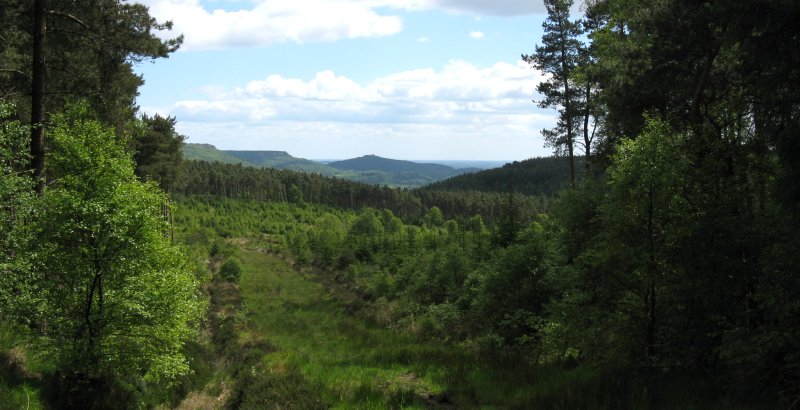
A view looking out from Boltby Forest over the Vale of York
Back to the Home page
Species lists below

A view looking out from Boltby Forest over the Vale of York
Fourteen members met on a mostly sunny but rather cool and windy morning at the entrance to Boltby forest. As this was primarily a moth/butterfly trip I did not make a complete plant list, though I did note down a few of the more interesting plants. This area has a good mix of old and young trees, with recently felled plantation reverting to birch scrub. This is what the argent and sable moths need, as birch is their main food-plant. The Forestry Commission have also created a couple of small ponds to attract such species as dragonflies and damselflies, but unfortunately the conditions were not suitable today so we didn’t see any apart from one large red damselfly. There are also a few clearings with grassland species, and plants such as birdsfoot trefoil and speedwell grow along the edges of the rides. There is also an area of seeded wildflower meadow round the old reservoir: on a hot summer’s day this is alive with butterflies such as common blues, but today there was nothing flying.
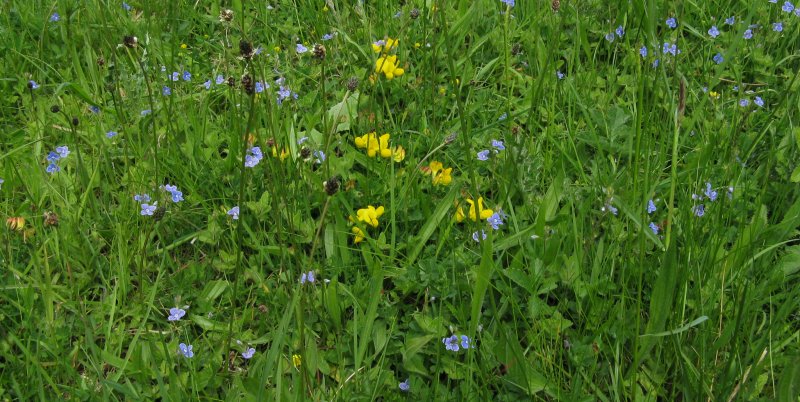
Birdsfoot trefoil and germander speedwell
The weather also meant there weren’t many butterflies on the wing, but we did glimpse quite a few species including a lovely fresh small copper and a couple of dingy skippers. On the moth front although there were a few of the “target species” argent and sable moth flying among the birches we did not manage to net one for close inspection, despite the best efforts of Keith, June and Nick. On the plus side Keith did catch a beautiful, fresh Mother Shipton moth for us to admire, and also a Red Necked Footman, a stunning-looking insect (see photo below).
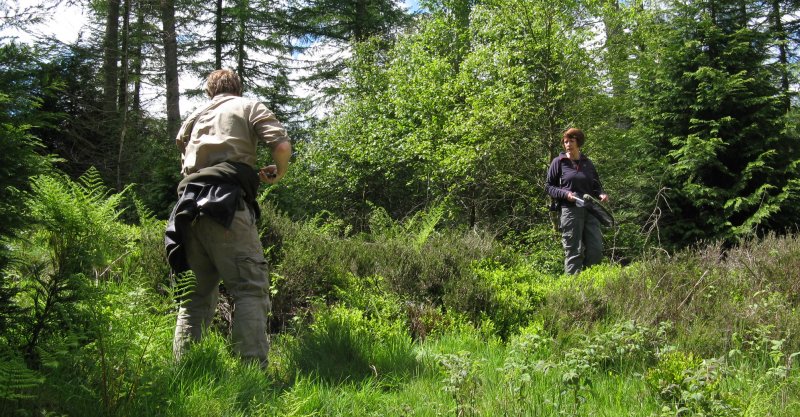
...the best efforts of Keith and June
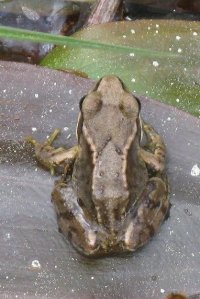
Most of the woodland was very dry, but we did find one nice wet ditch, with a small frog (probably a last year’s tadpole), a wolf spider and some kind of groundhopper posing on the pondweed. We saw several more of these yearling frogs later near the ponds. One small lizard was also seen, under the tall pines on the slopes above the ponds. We also spotted (roe) deer prints, including some very tiny ones from a fawn estimated as under a month old.
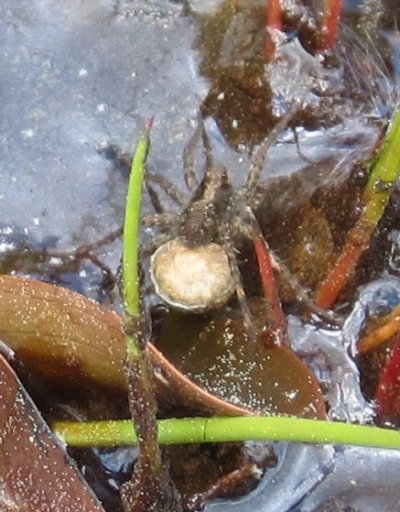 Wolf spider on pondweed |
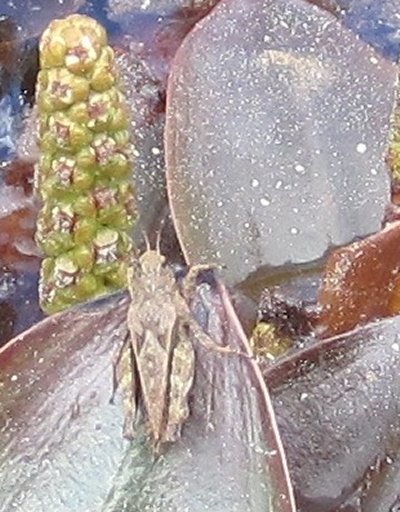
Groundhopper on pondweed |
There were many interesting plants. It was good to find both Large Bittercress Cardamine amara and its more familiar close relative Milkmaid C. pratensis (also known as Lady’s Smock or Cuckoo-flower). C. amara is usually a little taller, with always white flowers with the most beautiful purple anthers (C. pratensis has yellow anthers). There were also good specimens of Sanicle Sanicula europaea, an indicator of old woodland that always reminds me of ping-pong balls on stalks – it is fact an umbellifer. There was also a small patch of marsh orchids just coming into flower near our lunch spot: these led to a lively debate as to which species they might be (marsh orchids are a notoriously difficult group even when fully out. Especially here in Ryedale where we are at the northern limit of southern marsh orchid and the southern limit of the northern marsh orchid!) – my best educated guess is southern marsh orchid Dactylorhiza praetermissa. At the top of hte slope above the ponds, under pines and amongst bracken, we found a good spread of Chickweed Wintergreen Trientalis europaea, a charming little plant that is not common in Ryedale; although normally white it does occasionally produce pinkish flowers, and has attractive bronze leaves.
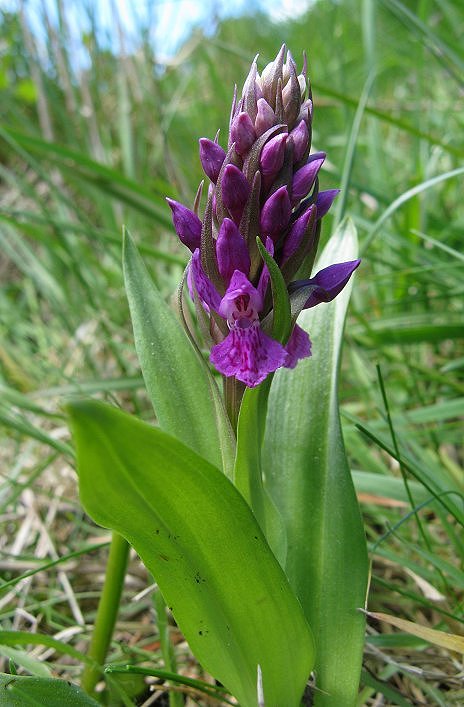
Marsh orchid, probably Dactylorhhiza praetermissa
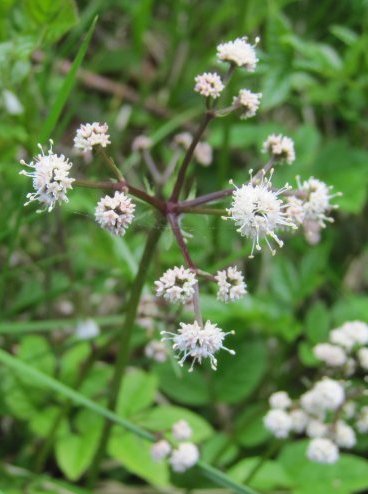
Sanicle Sanicula europaea |
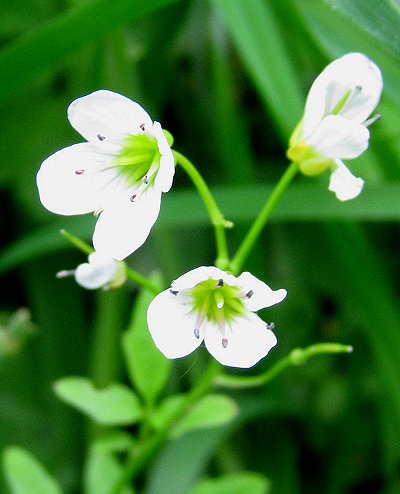 Large Bittercress Cardamine amara |
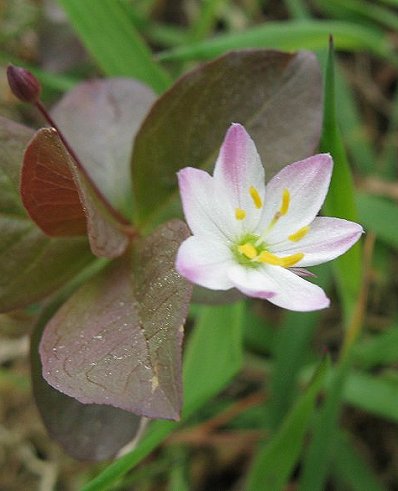 Chickweed wintergreen Trientalis europaea with pinkish tinge |
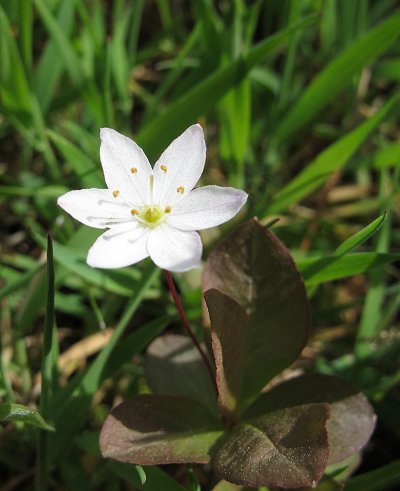
Chickweed wintergreen Trientalis europaea |
In addition to the moths and butteflies we did see a few other insects, including a beautiful scorpion fly that let Pauline creep up on it for a photo, and a stunning jewel-like green weevil Phyllobius sp. (thanks to Stuart Dunlop for the id).
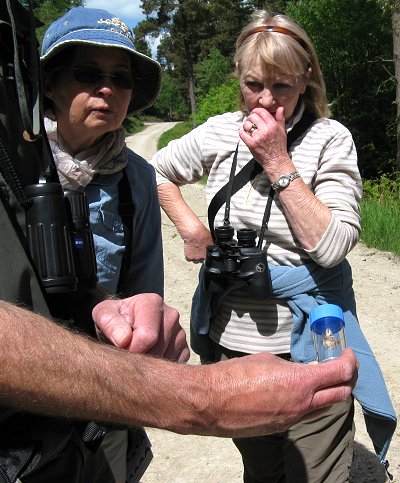 Members examining a moth we did manage to catch (and of course release) |
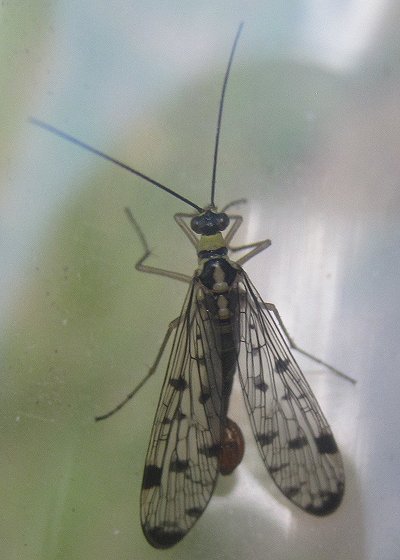
|
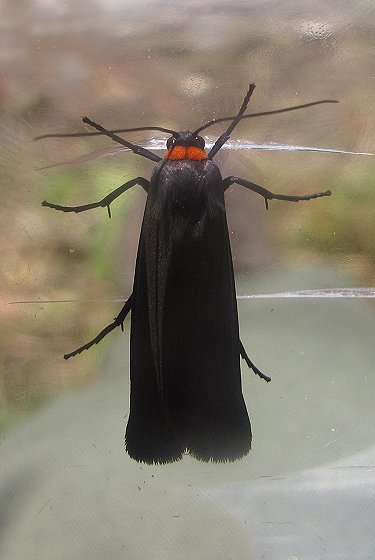
|
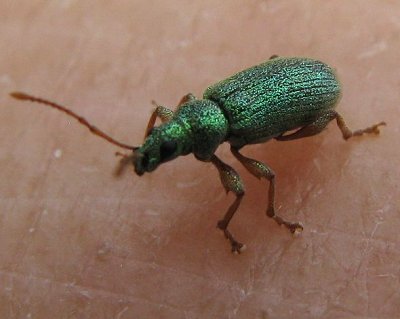
Green Phyllobius weevil (above) and |
The meeting was concluded with delicious cake.
Large bittercress Cardamine amara – interestiing to compare it with Milkmaid Cardamine pratensis
Wood and field forget-me-nots – also interesting to compare
Wood sanicle
Climbing corydalis
Figwort (leaves)
Welsh poppy, almost certainly an escape
Marsh orchid, probably southern
Hemp agromony
Hairy and common lady’s mantle (Alchemilla filicaulis ssp. vestita and A. xanthochlora respectively) – another pair for comparison
Butterflies
Dingy Skipper
Green Veined White
Orange Tip
Peacock
Small Copper
Small Heath
Small Tortoiseshell
Speckled Wood
Thanks to Pauline for this list.
Moths
Argent & Sable was seen but only in flight
Common Heath
Mother Shipton
Red Necked Footman
Silver Y
Pug? (micro)
Thanks to Puline and Keith for this list.
Other insects
Large Red Damselfly
Grasshopper
Groundhopper
Froghopper
Scorpion fly
Common Frog Common Lizard Wolf Spider Roe deer (“slots” or prints)
Possible honey fungus on a stump
| © Ryedale Natural History Society 2015, Photos © Gill Smith, Pauline Popely, Keith Gittens 2015 |